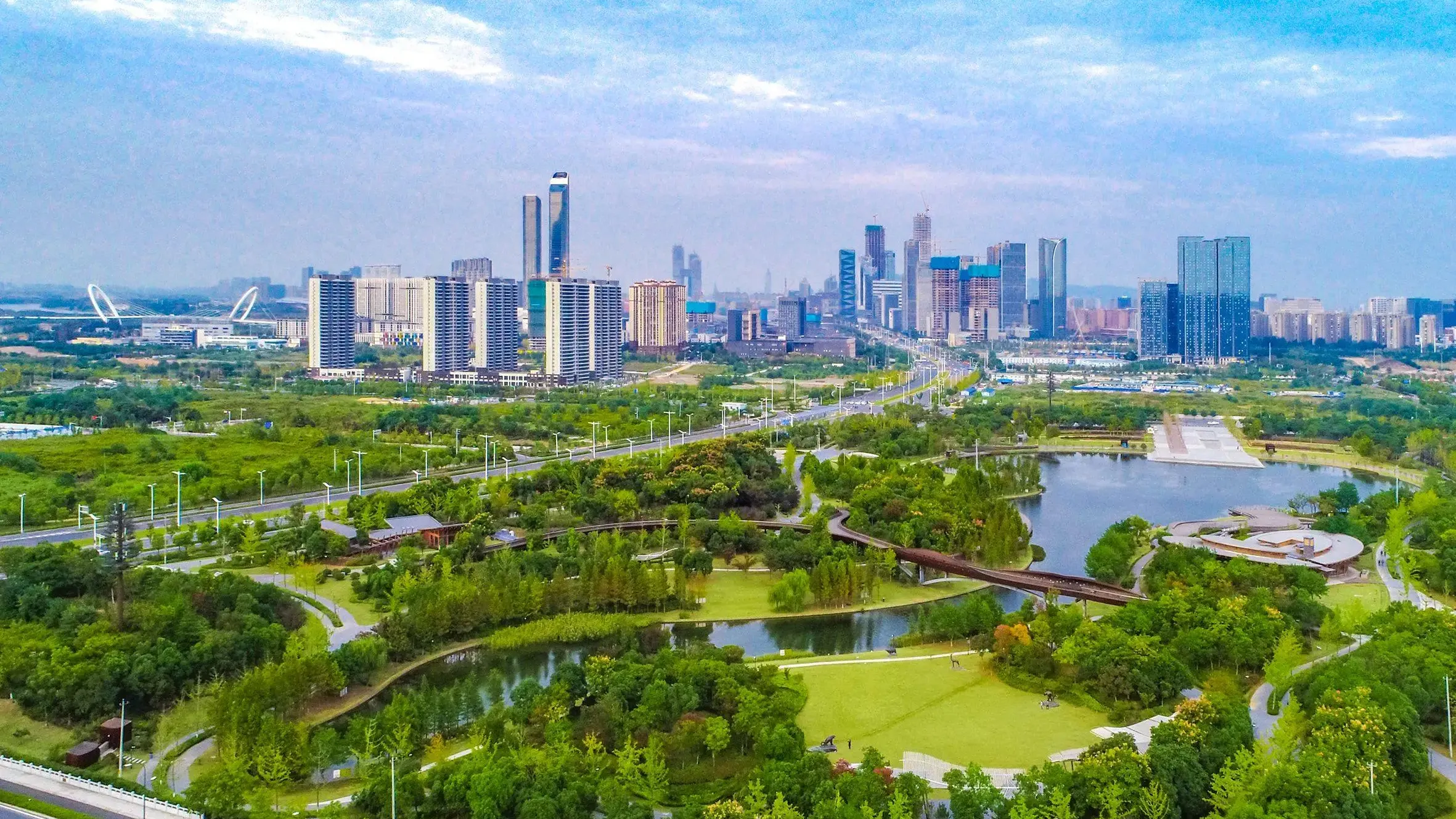- Product Knowledge
How Nature Impacts Mental Health in Cities?
In today’s urbanized world, where concrete, steel, and glass dominate the landscape, the effects of nature on mental health are often overlooked. But, if you look closely, nature has a profound ability to influence how we feel, think, and interact with our surroundings—especially in cities. As city dwellers face the daily grind of urban life, the importance of integrating nature into our mental health conversation has never been clearer.
You might think, how could something as simple as a tree, a garden, or a park have such a powerful impact on the mind? It’s not as straightforward as you might assume, but the link between nature and mental health is both real and scientifically proven. In this article, we’ll delve deep into how nature impacts mental health in cities, touching on everything from reducing stress to boosting creativity, and exploring the broader effects of urban greenery.

The Science Behind Nature and Mental Health
The relationship between nature and mental health is far more than just poetic musings or wishful thinking. There’s solid science to back it up. Researchers have long recognized that nature offers a myriad of psychological benefits. Nature, in its many forms, helps reduce levels of cortisol, the hormone closely linked to stress. When you step into a park or green space, your body reacts. You feel your heart rate slow, your muscles loosen, and your mood lift. It’s not just a coincidence.
In fact, studies show that even a brief walk through a forest or park can significantly lower stress levels. A famous study from Japan—where nature therapy, or “Shinrin-yoku” (forest bathing), has become a recognized practice—found that spending time in nature can reduce stress by up to 30%. How does this happen? It’s the calm, the natural beauty, the fresh air, and, believe it or not, the absence of city noise that gives our overstimulated brains the break they desperately need. Nature provides a mental reset, a chance to recharge.
The Stress of Urban Living
Living in the city has its perks—there’s no denying that. But urbanization, with all its conveniences and modern amenities, comes with its own set of mental health challenges. Cities are crowded, fast-paced, and buzzing with noise. The constant influx of information and demands on our attention can create an environment that’s mentally exhausting.
People who live in high-density urban areas are more likely to suffer from anxiety, depression, and mental fatigue compared to their counterparts in rural environments. The lack of green spaces exacerbates this, making it difficult for individuals to escape the noise, the chaos, and the pressure of city life. The absence of nature in such settings leads to mental burnout, which, over time, can contribute to more severe mental health issues.
This is where nature comes in—a form of mental rescue. With the ever-expanding urban sprawl, the need for accessible green spaces becomes not just a luxury, but a necessity. Parks, urban gardens, and natural environments provide a sanctuary, offering relief from the otherwise overwhelming pace of life.
The Calming Effects of Green Spaces
Green spaces in cities aren’t just beautiful to look at—they’re life-savers. They’re the places that give us a break from the concrete jungle. Whether it’s a small city park or an expansive urban forest, these spaces allow for what can only be described as mental breathing room.
Why do these green spaces work so well? Simple. They tap into something deeply ingrained in our biology. As humans, we’re connected to nature. Our ancestors spent much of their time outdoors, interacting with the natural world, so when we step outside into a park or wooded area, we’re reconnecting with something ancient and fundamental.
Studies confirm that exposure to nature improves overall well-being. People living near parks report lower levels of anxiety, depression, and general stress. The act of simply walking through a green space has been linked to reduced blood pressure, decreased anxiety levels, and a more positive outlook on life. It’s almost like the natural world has its own built-in therapeutic powers, a fact supported by research from the University of Essex on Nature and Mental Health.
Nature and the Brain: Cognitive Benefits
If the mental health benefits of nature weren’t enough, consider this: nature also has a remarkable impact on cognitive function. Ever found yourself feeling mentally drained after a long day of work in the city? It’s no surprise. Urban environments are packed with distractions that can overload the brain. The constant noise, the rapid pace, and the relentless demands of city life leave little room for mental rest.
That’s where nature works its magic. A walk through a park, or even just sitting by a tree, has been shown to improve focus, creativity, and problem-solving skills. Cognitive fatigue decreases, and our brain’s ability to concentrate improves. Some researchers have found that after just a short exposure to nature, people performed better on tasks involving memory and attention.
In fact, studies have demonstrated that cognitive performance improves after people spend time outdoors. Nature provides the mental clarity necessary to perform daily tasks with greater ease. The cognitive boost isn’t just about relaxation—it’s about preparing the brain to tackle challenges more efficiently.
The Mood-Boosting Power of Nature
It’s no secret that nature is a great mood booster. Have you ever felt a sense of calm wash over you when walking through a green space, hearing birds chirp, or seeing the sun peek through the trees? It’s not just the scenery—it’s what that scenery is doing to your brain. Natural environments trigger positive emotional responses, often reducing feelings of frustration, anger, or sadness.
Research supports this, with studies showing that even brief interactions with nature can lead to immediate mood improvements. A 2015 study published in the journal Environmental Science & Technology found that spending just 20 minutes in a green space could boost happiness and lower stress levels. In cities, where feelings of isolation and pressure often run high, nature provides an antidote to the negative emotions that may be more common in urban areas.
Nature and Social Connectivity
Here’s something many people don’t realize: nature fosters social connections. In urban areas, social isolation is a significant issue. People may live in crowded neighborhoods, yet feel disconnected from their community. But when we gather in green spaces—parks, public gardens, or even small community gardens—we connect with others. We share spaces, ideas, and experiences.
Green spaces are more than just visually appealing—they play a vital role in reducing urban stress. Urban parks, gardens, and forests provide spaces for people to escape the chaos of the city. According to the American Psychological Association on Green Spaces and Well-Being, these spaces contribute significantly to reducing mental fatigue, improving mood, and enhancing overall mental health.
Nature Therapy: A Holistic Approach to Healing
Nature therapy, also known as eco-therapy, is gaining traction as a holistic approach to improving mental health. Whether through forest bathing, guided nature walks, or gardening, eco-therapy harnesses the healing power of nature to address a variety of mental health concerns, including anxiety, depression, and PTSD.
For instance, in Japan, forest bathing has been shown to reduce stress, enhance mood, and improve overall mental health. Eco-therapy has also become a popular treatment option in Western countries, with programs designed to help individuals manage stress, build resilience, and combat the mental fatigue common in urban life.
The Future of Nature and Urban Mental Health
The need for green spaces in cities is growing, and thankfully, urban planning is beginning to catch on. More cities are incorporating nature into their designs, from green rooftops and vertical gardens to expansive parks and community gardens. As the mental health crisis continues to rise globally, cities have a responsibility to ensure that nature is woven into the fabric of urban life.
Biophilic design—the practice of integrating natural elements into buildings and urban spaces—is also gaining momentum. This approach can create environments that naturally support mental health by reducing stress and fostering feelings of calm. Imagine walking into a building surrounded by greenery or working in a space where nature is just outside the window. The future is bright for cities that prioritize mental health through the integration of nature.
Frequently Asked Questions
Nature helps reduce stress, improve mood, boost cognitive function, and promote social interaction, all of which contribute to better mental health.
Nature enhances focus, memory, and creativity by providing a mental reset and reducing cognitive fatigue.
Green spaces offer a retreat from urban stress, reduce anxiety, improve physical health, and foster social connections.
Nature therapy involves using nature to treat mental health issues, through practices like forest bathing, gardening, and nature walks.
Yes, exposure to nature has been shown to reduce anxiety, depression, and overall stress, improving mental well-being.
Cities can incorporate green spaces, biophilic design, and nature-based solutions to support the mental health of residents.
Conclusion
It’s clear: nature is an essential part of urban life. In cities, where stress and mental fatigue run high, access to green spaces isn’t just a luxury—it’s a necessity. Whether through improved mood, reduced stress, better cognitive function, or increased social connections, nature has an undeniable impact on mental health. As cities continue to grow, let’s not forget the healing power of nature and the incredible benefits it brings to our minds and well-being.



